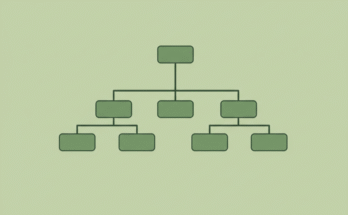As blockchain technology continues to evolve, understanding its terminology is crucial for staying ahead in the industry. The world of cryptocurrency and blockchain is rapidly expanding, with new concepts and innovations emerging regularly.
To navigate this complex landscape, it’s essential to familiarize yourself with key terms and concepts, including cryptocurrency terminology and the latest developments in the field. By grasping these fundamental concepts, you’ll be better equipped to understand the intricacies of blockchain technology and its applications.

Key Takeaways
- Understanding blockchain terminology is vital for success in the industry.
- Cryptocurrency and blockchain are closely related concepts.
- Staying up to date with the latest developments is crucial.
- Familiarity with key terms and concepts is essential.
- Blockchain technology has numerous applications and use cases.
Blockchain Fundamentals Every Beginner Should Master
To grasp the full potential of blockchain, one must first understand its foundational elements. Blockchain technology is built on several core concepts that form the backbone of its functionality and security.
1. Distributed Ledger Technology Explained
Distributed Ledger Technology (DLT) is the underlying framework that enables blockchain’s decentralized and transparent nature. It allows multiple parties to record and verify transactions without the need for a central authority.
2. Blocks, Chains, and Nodes
In a blockchain, data is grouped into blocks, which are then linked together in a chain. This chain is maintained by a network of nodes, which are essentially computers that store a copy of the blockchain. The decentralized nature of nodes ensures that the blockchain remains resilient and trustworthy.
3. Public vs. Private Blockchains
Blockchains can be categorized into public and private blockchains. Public blockchains, like Bitcoin, are open to anyone and allow for decentralized participation. Private blockchains, on the other hand, are restricted and typically used by organizations for internal purposes.
4. Consensus Mechanisms and Mining
Consensus mechanisms are critical in maintaining the integrity of the blockchain. They ensure that all nodes agree on the state of the blockchain, preventing fraudulent activities.
5. Proof of Work vs. Proof of Stake
The two most common consensus mechanisms are Proof of Work (PoW) and Proof of Stake (PoS). PoW requires miners to solve complex mathematical problems, while PoS relies on validators who “stake” their own cryptocurrency to participate in the validation process.
6. Emerging Consensus Models
New consensus models, such as Delegated Proof of Stake (DPoS) and Proof of Capacity (PoC), are being developed to address the limitations of traditional mechanisms, offering improved scalability and energy efficiency.
7. Cryptography and Security Terms
Cryptography plays a vital role in securing the blockchain. Key concepts include hash functions, which ensure data integrity, and digital signatures, which authenticate transactions.
8. Hash Functions and Digital Signatures
Hash functions take input data of any size and produce a fixed-size output, known as a hash. Digital signatures, on the other hand, use asymmetric cryptography to verify the authenticity of transactions, ensuring that they come from the claimed sender.

Essential Blockchain Terms for Cryptocurrency Users
As cryptocurrency continues to evolve, understanding the essential blockchain terms is crucial for users to navigate the market effectively. The cryptocurrency landscape is filled with various digital assets, wallets, and exchanges, making it vital for users to grasp the related terminology.
- Blockchain: A decentralized digital ledger that records transactions across multiple computers, ensuring security and transparency.
- Cryptocurrency: Digital or virtual currency that uses cryptography for secure transactions, like Bitcoin or Ethereum.
- Wallet: A digital tool used to store and manage your cryptocurrency. It can be software-based (online) or hardware-based (offline).
- Private Key: A secret code that allows you to access and manage your cryptocurrency. Keep this secure.
- Public Key: A unique address that others use to send cryptocurrency to your wallet.
- Mining: The process of validating transactions on the blockchain and earning cryptocurrency as a reward.
- Smart Contracts: Self-executing contracts with terms directly written into code, enabling automated and trustless transactions.
- Decentralization: A core principle of blockchain, meaning no single entity controls the network.
Smart Contracts and DeFi Glossary
The burgeoning DeFi sector is built on the backbone of smart contracts, making it imperative to understand the fundamentals and the specific vocabulary associated with this technology. As we delve into the world of DeFi, it’s essential to grasp the concepts that enable these decentralized applications to function.
1. Smart Contract Fundamentals
Smart contracts are self-executing contracts with the terms of the agreement written directly into lines of code. They are a crucial component of DeFi applications, enabling the automation of various processes without the need for intermediaries.
2. Self-Executing Agreements
Smart contracts operate on a simple principle: when certain conditions are met, the contract executes automatically. This automation is what makes smart contracts so powerful, as it eliminates the need for trust in a central authority.
3. Oracles and Real-World Data
For smart contracts to function effectively, they often require access to real-world data. This is where oracles come in third-party services that provide smart contracts with the external information they need to execute correctly. Oracles act as a bridge between the blockchain and the real world, enabling smart contracts to make informed decisions based on real-time data.
4. DeFi Protocols and Services
DeFi protocols and services are the backbone of the decentralized finance ecosystem, providing users with a range of financial tools and applications. These protocols are built on blockchain technology and utilize smart contracts to facilitate various financial services.
5. Lending and Borrowing Platforms
Lending and borrowing are fundamental aspects of DeFi, allowing users to lend their assets to earn interest or borrow assets for various purposes. Platforms like Compound and Aave have become prominent in this space, offering users the ability to engage in lending and borrowing activities in a decentralized manner.
6. Decentralized Insurance
Decentralized insurance platforms offer coverage against various risks in the DeFi space, such as smart contract failures or asset price volatility. These platforms use smart contracts to facilitate claims processing, making the insurance process more transparent and efficient.
7. Yield Generation Terminology
Yield generation is a critical aspect of DeFi, as it allows users to earn returns on their assets. Understanding the terminology associated with yield generation is essential for navigating this complex landscape.
8. Staking and Yield Farming
Staking involves locking up assets to support the operation of a blockchain network, typically in proof-of-stake (PoS) systems, and earning rewards in return. Yield farming, on the other hand, involves moving assets between different DeFi protocols to maximize returns. Both strategies are used to generate yield in the DeFi ecosystem.
9. Impermanent Loss and Risk Metrics
Impermanent loss refers to the temporary loss of funds that can occur when providing liquidity to a decentralized exchange (DEX). Understanding impermanent loss and other risk metrics is crucial for managing risk in DeFi yield generation strategies.
Advanced Blockchain Terms for 2025 and Beyond
As blockchain technology continues to evolve, understanding advanced terms like Web3 and interoperability solutions will be crucial for staying ahead of the curve in 2025 and beyond. The blockchain landscape is becoming increasingly complex, with new concepts and technologies emerging regularly.
1. Web3 and Metaverse Integration
Web3 represents the next generation of the internet, where users have more control over their data and identity. Key concepts in Web3 include:
- Decentralized networks
- Blockchain-based services
- Enhanced user privacy
2. Digital Identity and Ownership
Digital identity and ownership are critical components of Web3, enabling users to manage their online presence and assets securely. This involves the use of non-fungible tokens (NFTs) and other blockchain-based identity solutions.
3. Decentralized Autonomous Organizations (DAOs)
DAOs are organizations that operate on blockchain technology, allowing for decentralized decision-making and community involvement. They have the potential to revolutionize traditional organizational structures.
4. Interoperability Solutions
As the blockchain ecosystem grows, interoperability between different blockchain networks becomes increasingly important. Key interoperability solutions include:
- Cross-chain bridges
- Layer 2 scaling solutions
5. Cross-Chain Bridges
Cross-chain bridges enable the transfer of assets and data between different blockchain networks, enhancing flexibility and usability.
6. Layer 2 Scaling Solutions
Layer 2 scaling solutions are designed to improve the scalability of blockchain networks, allowing for faster transaction times and lower fees.
7. Regulatory and Governance Vocabulary
As blockchain technology matures, regulatory and governance frameworks are becoming more defined. Understanding terms like compliance frameworks is essential for navigating this evolving landscape.
8. Compliance Frameworks
Compliance frameworks are sets of rules and guidelines that organizations must follow to ensure they are operating within legal and regulatory requirements. In the context of blockchain, these frameworks are crucial for maintaining transparency and trust.
Conclusion
Understanding the complex world of blockchain and cryptocurrency requires a solid grasp of key terms and concepts. This article has provided a comprehensive blockchain glossary, covering cryptocurrency terminology and smart contracts. By familiarizing yourself with these terms, you’ll be better equipped to navigate the rapidly evolving landscape of decentralized technologies.
As blockchain continues to shape various industries, staying informed about the latest developments is crucial. Whether you’re a seasoned investor or just starting to explore the world of cryptocurrency, having a strong foundation in blockchain terminology will help you make informed decisions and stay ahead of the curve.
With the increasing adoption of blockchain technology, the demand for professionals with a deep understanding of blockchain glossary, cryptocurrency terminology, and smart contracts is on the rise. By mastering these concepts, you’ll be well-positioned to capitalize on the opportunities emerging in this exciting and rapidly evolving field.


![[Blockchain Beyond Cryptocurrency] The Untapped Potential Across Industries](https://mineatech.com/wp-content/uploads/2025/08/blockchain-beyond-cryptocurrency-the-untapped-potential-across-industries-348x215.png)
![What Is a Blockchain Consensus Algorithm? [Explained Simply]](https://mineatech.com/wp-content/uploads/2025/08/what-is-a-blockchain-consensus-algorithm-explained-simply-348x215.png)